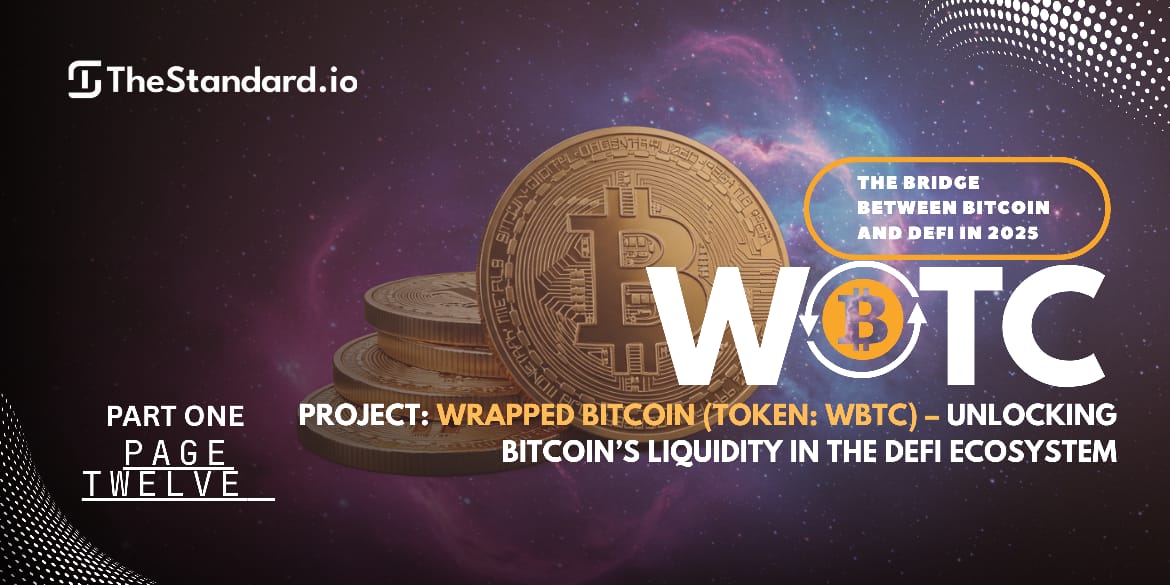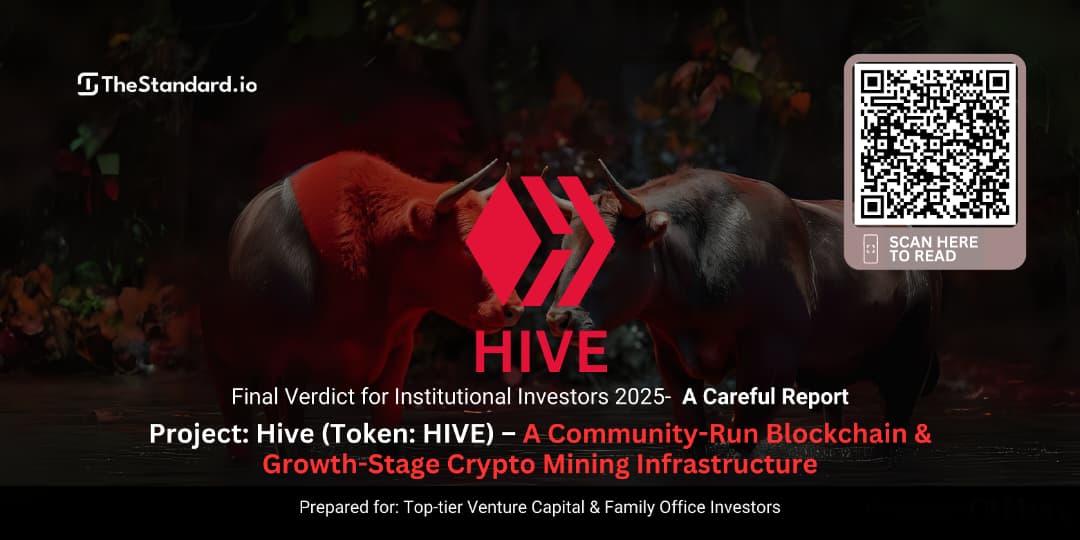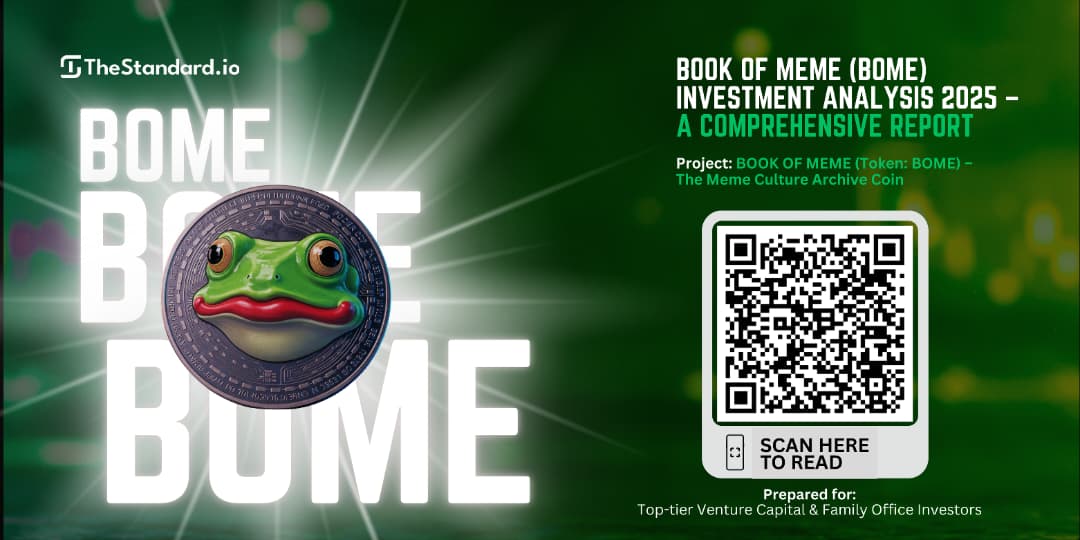Wrapped Bitcoin (WBTC): The Bridge Between Bitcoin and DeFi in 2025

Part 1 / Page 12
2. Integration with DeFi Protocols and dApps
One of the most important aspects of WBTC’s network architecture is its integration with Ethereum-based decentralized applications (dApps) and DeFi protocols. As an ERC-20 token, WBTC is fully compatible with the Ethereum ecosystem, allowing Bitcoin holders to use their BTC in DeFi without having to convert to ETH or other assets.
WBTC’s integration into DeFi protocols is crucial to its success, and it has been adopted by many leading platforms, including:
- MakerDAO: WBTC can be used as collateral for generating Dai (a decentralized stablecoin) within MakerDAO’s system. Users can lock up their WBTC as collateral and generate Dai, which they can use in the DeFi ecosystem (MakerDAO).
- Aave: WBTC is also used as collateral on the Aave lending platform, where users can deposit their WBTC and borrow other assets, such as ETH or DAI (Aave).
- Compound: Users can also lend and borrow WBTC on Compound, a leading decentralized lending platform. WBTC serves as one of the assets in the platform's lending pool, allowing users to earn interest or use it as collateral for borrowing (Compound).
These integrations make WBTC a highly liquid and widely accepted asset in the Ethereum-based DeFi ecosystem. By leveraging the power of Ethereum's smart contracts and DeFi protocols, WBTC has unlocked new use cases for Bitcoin holders, enabling them to access the full range of DeFi services without selling their Bitcoin.
3. Security Features: Audits, Proof-of-Reserve, and Custodianship
Ensuring the security and transparency of WBTC is one of the project’s most important priorities. The architecture of WBTC relies on multiple layers of security, including custodianship, third-party audits, and proof-of-reserve systems.
BitGo's Security Infrastructure:
BitGo plays a central role in securing Bitcoin reserves. As a regulated custodian, BitGo uses industry-leading security measures, such as multi-signature wallets and cold storage. Cold storage ensures that the Bitcoin is held offline, protected from potential online vulnerabilities. This infrastructure ensures that WBTC's Bitcoin reserves are secure and protected from hacks or theft.
Proof-of-Reserve System:
The Proof-of-Reserve system is a key part of WBTC’s security architecture. Through regular audits by third-party firms like Armanino, WBTC provides transparent verification that all tokens in circulation are fully backed by an equivalent amount of Bitcoin held by BitGo. These audits are publicly available, and users can verify the integrity of the system at any time. This transparency is critical for building trust, particularly with institutional investors who rely on verifiable data to ensure the safety of their assets (Armanino).
The ability to audit and verify the backing of WBTC on a continuous basis is a cornerstone of the project's success. Without these layers of security and transparency, it would be difficult to maintain the confidence of both retail and institutional investors, especially as WBTC becomes a widely used asset in DeFi.
4. Decentralized vs. Centralized Components in the Architecture
One of the most interesting aspects of WBTC’s network architecture is its hybrid model, combining centralized custodianship with decentralized components. Here’s how these two elements coexist:
- Centralized Custody by BitGo: BitGo holds the Bitcoin reserves in a centralized manner, meaning that a trusted third-party custodian is responsible for the safe storage of Bitcoin. This centralized approach is essential for ensuring that the backing of WBTC remains secure and reliable. BitGo’s multi-signature wallets and cold storage infrastructure ensure that the Bitcoin reserves are kept safe, and regular third-party audits provide additional transparency to ensure that each WBTC token is fully backed.
- Decentralized Governance and Use in DeFi: Despite the centralized custody model, the governance of WBTC is decentralized. The WBTC DAO is responsible for decision-making regarding platform upgrades, the addition of new custodians, and other critical aspects of the token’s development. Additionally, WBTC is fully compatible with Ethereum-based DeFi protocols, allowing users to interact with decentralized applications (dApps) without needing to trust a centralized exchange or service (WBTC Network).
The hybrid approach provides the best of both worlds: centralized security for the Bitcoin reserves and decentralized decision-making for the token’s protocol. This ensures that WBTC can maintain the trust of both institutional and retail investors, while still offering the benefits of DeFi participation.
5. Future Upgrades: Ethereum 2.0 and Beyond
The future scalability of WBTC is tied to Ethereum’s ongoing upgrades, particularly with the Ethereum 2.0 transition. As Ethereum moves from Proof-of-Work (PoW) to Proof-of-Stake (PoS), transaction costs are expected to decrease, and the network will become more scalable. This will directly benefit WBTC users by reducing gas fees and increasing transaction speeds, making it even more efficient to interact with WBTC on Ethereum-based platforms.
In the future, Layer 2 solutions (such as Polygon, Optimism, and Arbitrum) will further improve scalability, enabling even faster and cheaper transactions. This will allow WBTC to remain highly usable within the DeFi ecosystem as Ethereum continues to scale and evolve.
Conclusion
The technology and infrastructure behind Wrapped Bitcoin (WBTC) are built on a solid foundation, combining BitGo’s custodial security with Ethereum’s smart contract capabilities. The project benefits from a hybrid architecture that balances centralized custody with decentralized governance and interaction with DeFi protocols. WBTC’s minting and redeeming process, third-party audits, and proof-of-reserve transparency ensure its integrity and security, making it a reliable Bitcoin-backed asset for decentralized finance.
As Ethereum continues to evolve with Ethereum 2.0 and Layer 2 scaling solutions, WBTC’s scalability, transaction efficiency, and DeFi integration will continue to improve, ensuring its place as a leading tokenized Bitcoin solution in the DeFi space.
Next is 3C: Consensus Mechanism
Having explored the technology and infrastructure behind WBTC, we now move to Section 3C: Consensus Mechanism, where we will analyze how WBTC achieves consensus, including the transition to Ethereum 2.0 and the impact of Proof-of-Stake (PoS) on the project’s operations.
This concludes Section 3B: Network Architecture for Wrapped Bitcoin (WBTC). We have discussed its custodial model, network architecture, integration with DeFi, and future scalability solutions. Next, we will explore the consensus mechanism in Section 3C: Consensus Mechanism.
3C. Consensus Mechanism
How Does WBTC Achieve Consensus?
Wrapped Bitcoin (WBTC) operates within the Ethereum blockchain and leverages the consensus mechanism of Ethereum to ensure the integrity and validation of transactions. Ethereum has historically used Proof-of-Work (PoW) as its consensus mechanism, but it is transitioning to Proof-of-Stake (PoS) with the launch of Ethereum 2.0. This change has significant implications for WBTC, as it will directly impact transaction speed, cost, and scalability for Bitcoin holders wishing to use their Bitcoin in Ethereum-based decentralized finance (DeFi) applications.
1. Ethereum’s Proof-of-Work (PoW) Consensus Mechanism
For much of Ethereum’s history, it has operated on a Proof-of-Work (PoW) consensus mechanism. In this model, miners compete to solve complex cryptographic puzzles, and the first miner to solve the puzzle gets the right to add a new block of transactions to the blockchain. This process is energy-intensive, but it ensures the security of the network by making it computationally expensive to alter the blockchain.
When Wrapped Bitcoin (WBTC) was launched in January 2019, it utilized Ethereum’s PoW network to mint and redeem Bitcoin-backed tokens on the Ethereum blockchain. This allowed Bitcoin holders to lock their Bitcoin with BitGo (the custodian) and receive WBTC tokens in exchange, which were then used in DeFi protocols built on Ethereum.
The PoW mechanism on Ethereum also guarantees the immutability of transactions on the Ethereum network. Since WBTC transactions are conducted on Ethereum, they benefit from the security of Ethereum’s PoW consensus. Ethereum's PoW network has proven to be highly secure, and it has facilitated the smooth operation of WBTC’s minting and redemption process, where Bitcoin is exchanged for WBTC tokens and vice versa. However, as Ethereum scaled, this consensus mechanism became less efficient due to high gas fees and slower transaction processing during network congestion (Ethereum Foundation on PoW).
2. Transition to Ethereum 2.0 and Proof-of-Stake (PoS)
With the long-awaited transition to Ethereum 2.0 (ETH 2.0), Ethereum is shifting from Proof-of-Work (PoW) to Proof-of-Stake (PoS). This new consensus mechanism will replace the energy-intensive mining process with a more efficient and scalable model, where validators replace miners.
How Ethereum’s PoS Will Impact WBTC:
- Scalability and Lower Gas Fees: The move to Proof-of-Stake will significantly improve Ethereum’s scalability by enabling the network to process more transactions per second. PoS will reduce the gas fees associated with transactions, which is critical for the widespread use of DeFi applications and tokenized assets like WBTC. With Ethereum 2.0, the minting and redemption of WBTC tokens will become more cost-effective and efficient, which will further enhance WBTC's usability across DeFi protocols like Aave, Compound, and Uniswap.
- Security Improvements: PoS relies on validators who lock up their ETH as collateral to validate transactions. Validators are rewarded for honest behavior, and if they are found to be malicious or dishonest, they lose their staked ETH. This model offers increased security because the cost of attempting to manipulate the system is significantly higher than in PoW. As Ethereum transitions to PoS, WBTC will continue to benefit from these improved security measures, ensuring that each WBTC token remains backed by Bitcoin and the minting/redemption process is validated securely (Ethereum Foundation on PoS).
Thank you for taking the time to read this article. We invite you to explore more content on our blog for additional insights and information.
https://www.thestandard.io/blog
"If you have any comments, questions, or suggestions, please do not hesitate to reach out to us at [ https://discord.gg/K72hed6FRE ]. We appreciate your feedback and look forward to hearing from you."
CLICK HERE TO CONTINUE
PART 1 / PAGE 13: www.thestandard.io/blog/wrapped-bitcoin-wbtc-the-bridge-between-bitcoin-and-defi-in-2025-13
6 of the best crypto wallets out there
Vulputate adipiscing in lacus dignissim aliquet sit viverra sed etiam risus nascetur libero ornare non scelerisque est eu faucibus est pretium commodo quisque facilisi dolor enim egestas vel gravida condimentum congue ultricies venenatis aliquet sit.
- Id at nisl nisl in massa ornare tempus purus pretium ullamcorper cursus
- Arcu ac eu lacus ut porttitor egesta pulvinar litum suspendisse turpis commodo
- Dignissim hendrerit sit sollicitudin nam iaculis quis ac malesuada pretium in
- Sed elementum at at ultricies pellentesque scelerisque elit non eleifend
How to choose the right wallet for your cryptos?
Aliquet sit viverra sed etiam risus nascetur libero ornare non scelerisque est eu faucibus est pretium commodo quisque facilisi dolor enim egestas vel gravida condimentum congue ultricies venenatis aliquet sit quisque quis nibh consequat.

How to ensure the wallet you’re choosing is actually secure?
Integer in id netus magnis facilisis pretium aliquet posuere ipsum arcu viverra et id congue risus ullamcorper eu morbi proin tincidunt blandit tellus in interdum mauris vel ipsum et purus urna gravida bibendum dis senectus eu facilisis pellentesque.
What is the difference from an online wallet vs. a cold wallet?
Integer in id netus magnis facilisis pretium aliquet posuere ipsum arcu viverra et id congue risus ullamcorper eu morbi proin tincidunt blandit tellus in interdum mauris vel ipsum et purus urna gravida bibendum dis senectus eu facilisis pellentesque diam et magna parturient sed. Ultricies blandit a urna eu volutpat morbi lacus.
- At at tincidunt eget sagittis cursus vel dictum amet tortor id elementum
- Mauris aliquet faucibus iaculis dui vitae ullamco
- Gravida mi dolor volutpat et vitae lacus habitasse fames at tempus
- Tellus turpis ut neque amet arcu nunc interdum pretium eu fermentum
“Sed eu suscipit varius vestibulum consectetur ullamcorper tincidunt sagittis bibendum id at ut ornare”
Please share with us what is your favorite wallet using #DeFiShow
Tellus a ultrices feugiat morbi massa et ut id viverra egestas sed varius scelerisque risus nunc vitae diam consequat aliquam neque. Odio duis eget faucibus posuere egestas suspendisse id ut tristique cras ullamcorper nulla iaculis condimentum vitae in facilisis id augue sit ipsum faucibus ut eros cras turpis a risus consectetur amet et mi erat sodales non leo.

Subscribe to our newsletter.
Get the latest alpha from us, and the Chainlink build program in an easy-to-read digest with only the best info for the insider.
It's an easy one-click unsub, but I bet you won't; the info is just too good.

Try the future of borrowing today.
Don't wait. It's easy to open a free smart vault
then start earning a yield and borrowing today.
0xf5A27E55C748bCDdBfeA5477CB9Ae924f0f7fd2e
USDs Contract on Arbitrum:
0x2Ea0bE86990E8Dac0D09e4316Bb92086F304622d










